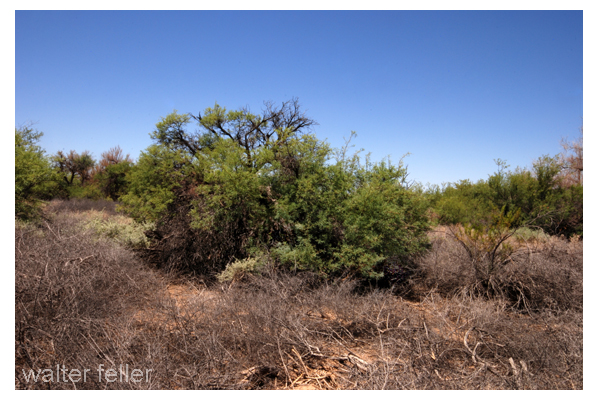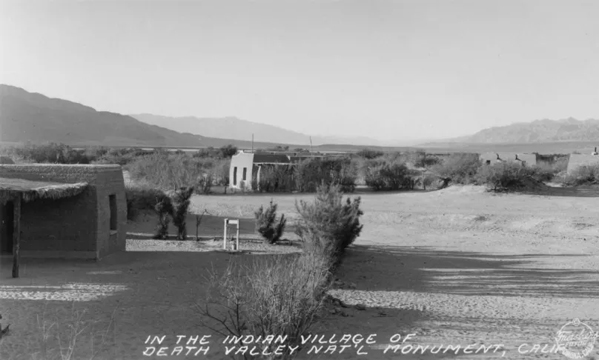
Timbisha Shoshone Desert Plant Knowledge: Traditional Survival in Death Valley
Death Valley, a land of extremes, conjures images of scorching sun, barren salt flats, and unforgiving aridity. Yet, for thousands of years, this ostensibly desolate landscape has been home to the Timbisha Shoshone people, whose profound and intricate knowledge of desert plants transformed potential death into sustainable life. Their ethnobotanical wisdom, passed down through generations, is not merely a collection of facts but a living testament to human ingenuity, resilience, and an unparalleled connection to a land that few others could master.
The Timbisha, whose name translates to "rock paint" and refers to the red ochre found in the region, have inhabited Death Valley and its surrounding mountains for at least a millennium, possibly much longer. They are the true "people of the land," and their survival in what is recognized as one of the hottest places on Earth hinged entirely on their ability to decipher the desert’s subtle language, particularly the secrets held within its flora. This wasn’t just about finding food; it was about medicine, tools, shelter, and water – a holistic understanding that sustained communities where others saw only desolation.
Central to the Timbisha’s survival toolkit was the Mesquite tree (Prosopis glandulosa/pubescens). Far from being a mere shade provider, the mesquite was a desert supermarket. Its beans, collected when ripe and dried, were ground into a nutritious flour, a staple that could be stored for long periods. "The mesquite gave us strength," an elder might recount, "Its pods were our bread, its wood our fire, its shade our respite." The wood itself was invaluable for tools, construction, and fuel, burning hot and long. Its deep root system allowed it to tap into subterranean water sources, making it a reliable landmark and a source of life in parched landscapes.
Another cornerstone of Timbisha plant knowledge was the ubiquitous Creosote Bush (Larrea tridentata). Often dismissed as a scrubby, resinous plant, the creosote bush was a desert pharmacopoeia. Its leaves and branches were brewed into a potent tea, used to treat a myriad of ailments from colds and coughs to stomachaches and infections. Its antiseptic and anti-inflammatory properties were well understood. The Timbisha also utilized its resin as an adhesive, a sealant for baskets, and even as a waterproofing agent. Its distinct, earthy scent after a rain is a signature of the Mojave and Sonoran deserts, a smell that for the Timbisha signified not just moisture but potential healing.
The formidable Yucca (Yucca brevifolia/schidigera), with its sharp, sword-like leaves, was another essential resource. The tough fibers extracted from its leaves were meticulously processed to create ropes, sandals, mats, and the intricate basketry for which the Timbisha are renowned. The yucca’s flowers and young stalks were also consumed, providing valuable nutrients. The roots, rich in saponins, served as a natural soap and shampoo, demonstrating an ingenious use of the plant for hygiene in an environment where water was precious. "Every part of the yucca had a purpose," a Timbisha weaver might explain, "From the fiber that held our lives together to the root that cleaned our bodies."

Beyond these staples, a wealth of other plants played critical roles. Agave (Agave deserti) hearts, harvested and slow-roasted in earthen ovens for days, transformed into a sweet, nutritious food source. The seeds of Indian Ricegrass (Achnatherum hymenoides) were painstakingly collected and ground into flour, a vital grain for their diet. Various species of Saltbush (Atriplex confertifolia) provided edible greens and seeds, demonstrating the Timbisha’s ability to utilize halophytic plants that thrive in saline soils where others perish. Even the Devil’s Claw (Proboscidea parviflora), with its distinctive, claw-like seed pods, was prized for its long, dark fibers, used to create the striking black patterns in their exquisite coiled baskets.
This extensive plant knowledge wasn’t simply a collection of recipes and remedies; it was intricately woven into the Timbisha’s cultural fabric. Knowledge was passed down orally, through stories, songs, and direct mentorship from elders to younger generations. Children learned to identify plants, understand their seasonal cycles, and master the techniques for harvesting and processing them. This intergenerational transmission ensured the continuity of their culture and survival skills. The land itself was their classroom, the plants their textbooks, and the elders their most revered teachers. This deep, reciprocal relationship fostered not just survival but also a profound spiritual connection to their ancestral lands, seeing the plants not just as resources but as relatives and providers.
The arrival of Euro-Americans brought immense challenges. The gold rushes, mining booms, and the eventual establishment of Death Valley National Monument (later a National Park) disrupted traditional lifeways. The Timbisha were often forcibly removed from their ancestral lands, their access to traditional gathering sites restricted, and their resource management practices misunderstood or ignored. The narrative of Death Valley as an "empty" wilderness, ready for preservation, overlooked the millennia of sophisticated human habitation and stewardship. This disjunction threatened to sever the vital link between the Timbisha people and their plant knowledge.
Despite these hardships, the Timbisha Shoshone have demonstrated extraordinary resilience. In 1990, they became the first Native American tribe to regain a land base within a national park, establishing the Timbisha Shoshone Tribal Homeland within Death Valley National Park. This landmark achievement has allowed them to begin reclaiming and revitalizing their cultural practices, including their traditional plant knowledge. Collaboration with the National Park Service has opened avenues for the Timbisha to educate park visitors about their history and ethnobotanical wisdom, ensuring that their story and the secrets of the desert plants are not lost.
Today, the Timbisha Shoshone continue to practice and preserve their plant knowledge, recognizing its invaluable importance. In an era of increasing environmental uncertainty and climate change, their traditional ecological knowledge offers critical insights into sustainable living in arid environments. Ethnobotanists and researchers are increasingly turning to Indigenous communities like the Timbisha for their deep understanding of local ecosystems and their potential applications in modern medicine, agriculture, and conservation. The Timbisha’s wisdom is a living library, holding keys to understanding desert ecology and human adaptation.
The Timbisha Shoshone’s survival in Death Valley is a powerful narrative that transcends mere endurance. It is a story of profound intelligence, adaptability, and a spiritual bond with the natural world. Their mastery of desert plant knowledge transformed a landscape perceived as hostile into a bountiful home, enabling generations to thrive. As the sun sets over Death Valley, casting long shadows across its rugged terrain, the silent wisdom of the creosote, the enduring strength of the mesquite, and the versatile utility of the yucca stand as enduring testaments to the Timbisha Shoshone’s legacy – a legacy not just of survival, but of a profound and respectful co-existence with one of the planet’s most extreme environments. Their story reminds us that true wealth often lies not in what we extract, but in what we understand and cherish.
